How New Year’s Eve Came to Times Square

Confetti showers in Times Square at midnight on December 31. (Photo: Kohei Kanno/flickr)
On New Year’s Eve in 1903, there was no countdown to midnight, no ball drop, and no partygoers wearing silly hats in Times Square. In fact, there was no “Times Square.”
But all that changed the following year, when the newspaper publisher Adolph Ochs moved the headquarters of the New York Times from Park Row to West 42nd Street and celebrated with a bash that launched an iconic New Year tradition.
At the turn of the 20th century, Times Square was called Longacre Square. Stables, harness shops and carriage factories—not glitzy theaters and chain stores—lined the intersection of West 42nd Street, Seventh Avenue and Broadway.
“The sound of blacksmiths’ hammer mingled with the tinkle of the horse-car bell. Stables abounded, and here and there a red flag indicated a horse auction,” noted Valentine’s Manual of Old New York. At night, the district went dark, “save for the dim lights of an occasional livery-stable, a corner saloon, or a city street lamp.”
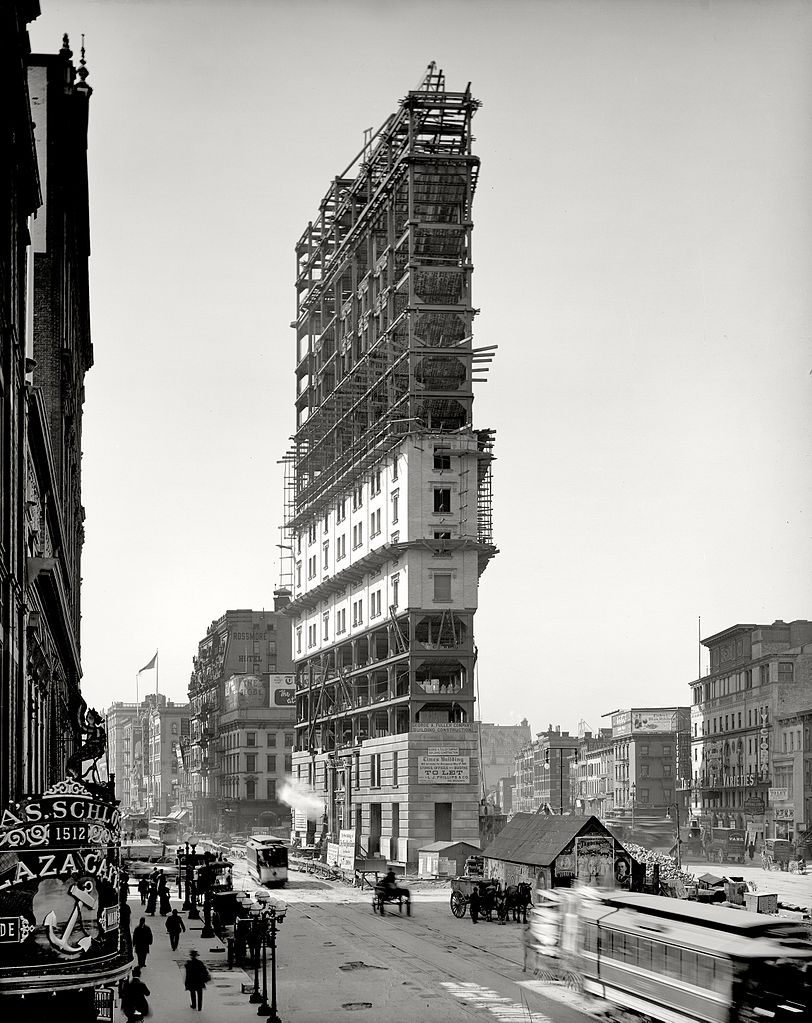
One Times Square under construction in 1903. (Photo: Public Domain/WikiCommons)
But Ochs recognized that big things were happening in Longacre Square. The city’s first underground subway linking lower Manhattan to 42nd Street opened in 1904, spurring commercial development in the area. Ochs chose a triangle of land on 42nd Street for his newspaper’s new digs, and wanted his building to face north to echo the aspirations of the burgeoning city.
August Belmont, the president of the new subway and a New York Times shareholder, was probably the one who suggested the renaming of Longacre Square. He had to have been aware that the Times’ archrival, the New York Herald, had successfully named the intersection of 34th Street, Sixth Avenue, and Broadway – now Herald Square – after itself. “Belmont wanted to get the most bang for the bucks he was putting into the railroad,” said David W. Dunlap, a longtime reporter at the Times’ Metro section.
Mayor George McClellan made the name change official on August 8, 1904. To commemorate the newspaper’s new address, Ochs planned a spectacular street party for December 31, 1904. At the time, New York’s main New Year’s Eve celebration was a relatively somber affair at Trinity Church downtown, where revelers sang hymns and bells clanged at midnight. The Times’ party, in contrast, would usher in 1905 with fireworks, noisemakers and Fanciulli’s Concert Band at the foot of the Times Tower.
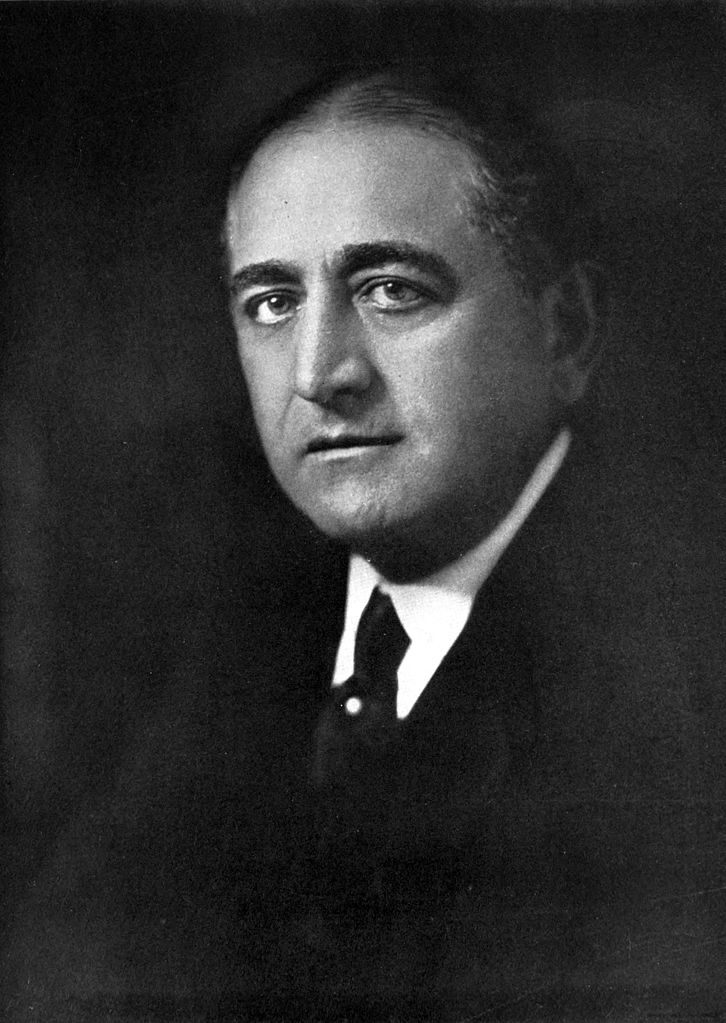
Publisher Adolph Ochs in 1918. (Photo: Public Domain/WikiCommons)
By 9 p.m., so many revelers packed the square that motion in any direction was impossible. A few minutes before midnight, workers fired a dynamite bomb from the tower—a signal that the new year was imminent. Then, they illuminated a huge electric display marking “1905” on the building’s roof, visible for miles. Fireworks shot from the upper floors while the throngs on the sidewalk rattled strings of tin cans or blasted horns shaped like champagne bottles.
“Never was a New Year’s Eve more joyously celebrated,” the Times reported the following morning.
The fireworks, however, presented a safety issue. A movement to ban them gained momentum in the early 20th century, and activists called for “safe and sane” celebrations without pyrotechnics, said Michael Miscione, the Manhattan borough historian. Ironically, the Times had published an editorial opposing fireworks after a 1902 explosion in Madison Square. “Whether it was the imposition of those new, tighter restrictions or a feeling of hypocrisy that drove the decision, I can not say, but the Times would eventually abandon their own New Year’s Eve fireworks displays in favor of the safer and saner ball drop,” Miscione said.
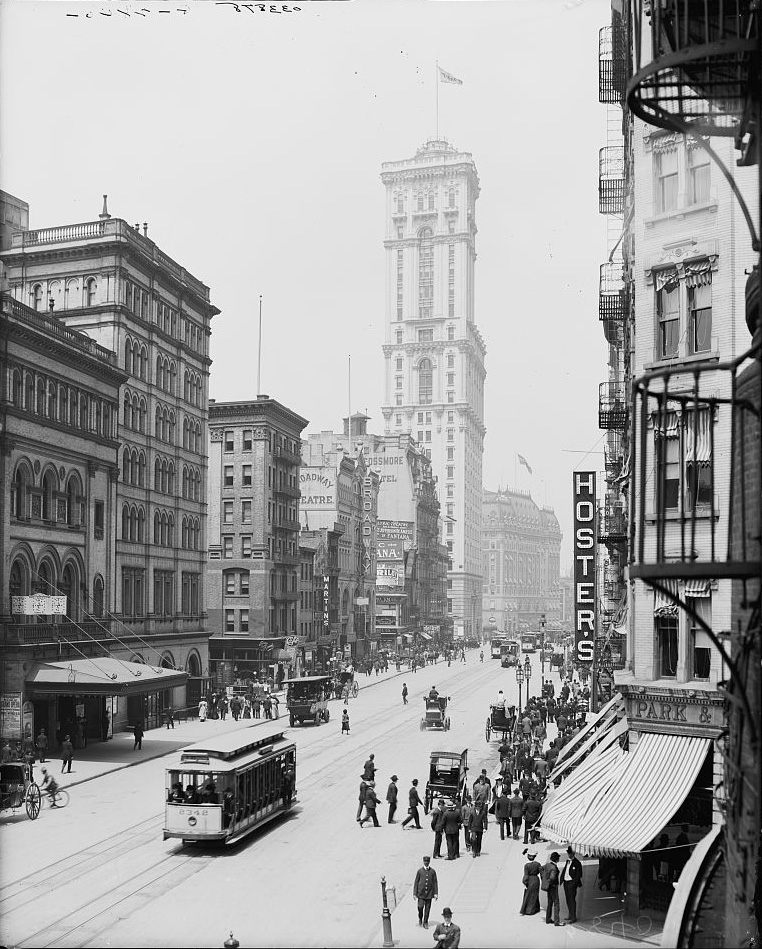
Broadway in 1903. (Photo: Library of Congress)
Ochs based the New Year ball drop on a century-old timekeeping tradition in which navigators at sea set their clocks according to “time balls” on shore. The first New Year ball, an iron-and-wood sphere with 100 lightbulbs mounted on a 70-foot flagpole atop the Times Building, weighed 700 pounds.
On December 31, “the flashlight on top of the Times Building kept reminding people that up there at a second after midnight the blazing electric ball would fall,” the paper reported. Workers from the Times Square sign company Artkraft Strauss got ready to lower the orb by hand.
“At ten minutes to midnight the whistles on every boiler in Manhattan, the Bronx, Brooklyn and the waters thereof began to screech. Tens of thousands stood watching the electric ball. And then—it fell.” The crowd roared.

A close up of the Times Square Ball. (Photo: Sealle/WikiCommons CC BY-SA 2.0)
The ball drop ceremony has changed little in the 108 years since its debut, though some details are different. The ball itself has been redesigned a few times; its current incarnation sports 2,688 Waterford crystals and weighs 11,875 pounds. The Times relocated to West 43rd Street in 1914, but the ball still descends on the roof of the old Times tower. The live music, crowds and noisemakers are still there—just bigger, louder, and with Ryan Seacrest.
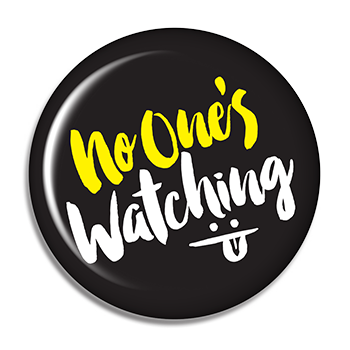 Welcome to No One’s Watching Week, the time of the year when the readers are away and your tireless editors have run amok. For this week only, Atlas Obscura, New Republic, Popular Mechanics, Pacific Standard, The Paris Review, and Mental Floss will be swapping content that is too out there for any other week in 2015.
Welcome to No One’s Watching Week, the time of the year when the readers are away and your tireless editors have run amok. For this week only, Atlas Obscura, New Republic, Popular Mechanics, Pacific Standard, The Paris Review, and Mental Floss will be swapping content that is too out there for any other week in 2015.

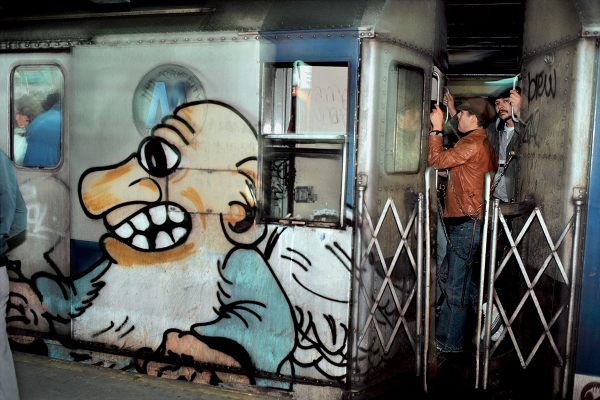
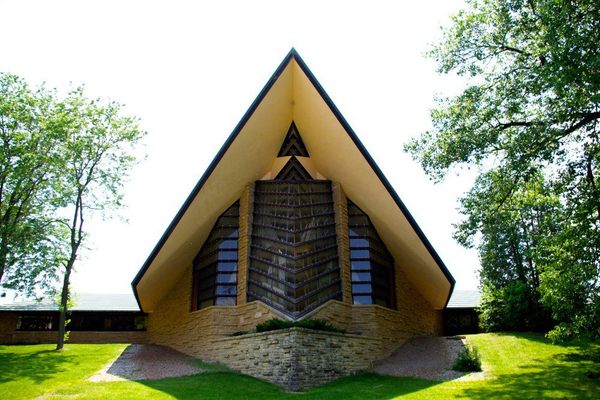





Follow us on Twitter to get the latest on the world's hidden wonders.
Like us on Facebook to get the latest on the world's hidden wonders.
Follow us on Twitter Like us on Facebook